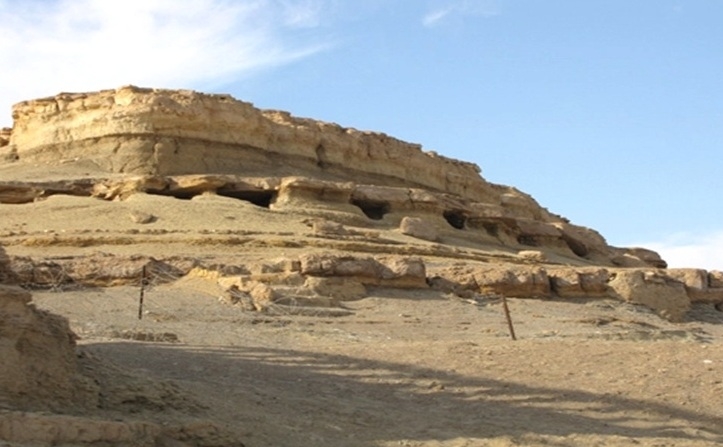El Muzzawaka means The Decorated, it is a part of Amheida cemeteries, consists of a series of small soft stone hills or ridges in which over 300 tombs were cut, dating back to the Roman era, to the first and second centuries A.D. The decoration was mixed with Egyptian and Roman style, it was discovered in 1908.
Although plenty of the tombs still unexcavated, the most gleaming landmarks of El Muzzawaka Tombs are the cemeteries of Petubastis and Petosiris, they are outstanding for their exquisite colorful frescos. The tomb of Petubastis consists of a single decorated chamber with recessed shelves to house the mummies, this chamber is beautifully decorated, on the eastern wall there is an outstanding portrait of Petubastis is shown on one of the walls. The ceiling is painted with the constellations in the style of the first century AD.
The second tomb, belonging to Petosiris, dates from the early part of the second century AD and contains two chambers. The owner is portrayed on a wall inside the first chamber of the tomb wearing a long pink tunic and surrounded ancient Egyptian religious symbols, including a hieroglyphic text.
In fact, archaeologists are not certain whether either of these two tombs actually contained burials, but many mummified bodies have been found in neighbouring undecorated tombs. El Muzzawaka Tombs have been known of for many years and have been well-plundered for any artifacts of value. The two major tombs were photographed by Herbert Winlock in 1908, but only rediscovered by Ahmed Fakhry as recently as 1972 after which time the badly damaged frescos were restored.

